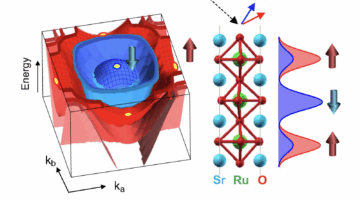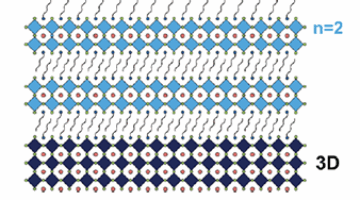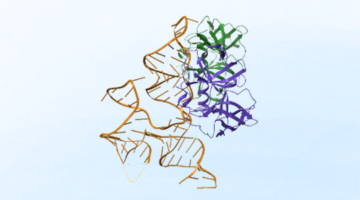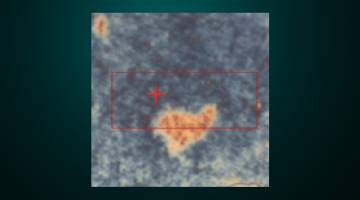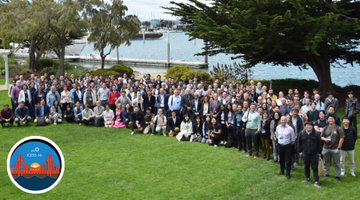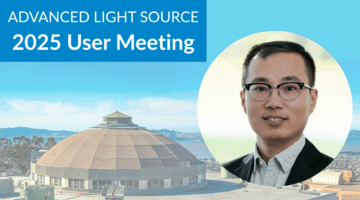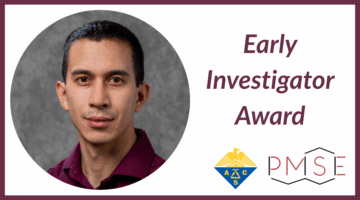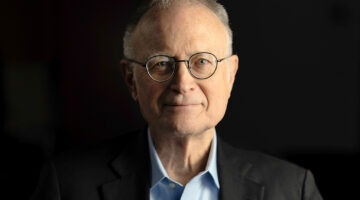The strontium ruthenate family has a perovskite-like structure that can assemble into different configurations, offering an ideal way to study how the physics change as the material goes from 3D to 2D. In this study, researchers revealed how electrons with different spins behave in distinct layers of a three-layer magnetic material. The results deepen the field’s understanding of how magnetism emerges in layered materials, an important concept for future magnetic technologies and quantum electronic devices. Read more »![]()
![]()
ALSNews Vol. 471
August 5, 2025
Stable 2D Interlayer Prolongs Perovskite Devices
Layered 2D/3D perovskite bilayer heterostructures have the potential to boost the performance and durability of many types of electronic and photonic devices, but maintaining this performance depends on the stability of the cell’s 2D interlayer. In this study, researchers optimized time-resolved, spontaneous thin-film deposition of 2D perovskites using a mixed solvent approach to produce phase pure, stable thin films with high crystallinity. Read more »![]()
![]()
Researchers Identify Viral Swiss Army Knife, Clarifying How Replication Occurs
Viruses are ingenious, infectious agents, capable of replicating inside the living cells of a host organism. Enterovirus, a common viral pathogen, is responsible for a range of diseases from mild colds to severe conditions, including viral meningitis, myocarditis, and paralysis. A new study sheds light on how enteroviruses use structured RNA elements and multifunctional proteins to coordinate viral replication efficiently using minimal genetic material. Read more »
Dehydration Key Element in Soil Microbe Evolution
A new study illustrates how microbes respond, in real time, to environmental stress, improving the research community’s knowledge of the hidden microbial engines that keep our planet running. Read more »
Celebrating the Legacy and Future of Electron Spectroscopy: Highlights from ICESS 2025
The 2025 ICESS conference brought together global experts in electron spectroscopy, emphasizing interdisciplinary research, early career engagement, and collaboration. Hosted in Berkeley and led by the ALS, it featured plenary and invited talks, poster sessions, and networking events, highlighting innovations and future directions in the field. Read more »
Changes to Proposals for January–July 2026
The ALS-U project is evaluating a potential schedule shift, including a shutdown for dark time starting summer 2026. Since an earlier dark time is possible, our goal is to ensure active proposals receive needed beamtime and make beamtime requests accessible when possible. Learn more about the September proposal cycle changes. For any questions, contact alsproposals@lbl.gov. Read more »
Guiliang Xu to Receive 2025 Early Career Award
Guiliang Xu is the 2025 winner of the Early Career Award. The Users’ Executive Committee recognizes his work on synchrotron-based characterization of battery materials. Read more »
2025 ACS Early Investigator Award for Greg Su
Staff Scientist Greg Su has been selected for an Early Investigator award by the American Chemical Society (ACS) Division of Polymeric Materials: Science and Engineering (PMSE). Attendees of the 2025 ACS Fall Meeting will be able to hear Su’s award seminar on Wednesday, August 20. Read more »
Berkeley Lab Director Witherell Retirement, June 2026
Dr. Michael S. Witherell announced his intention to retire in Spring 2026 from his position as director of Lawrence Berkeley National Laboratory after nearly a decade of service. Witherell’s leadership has strengthened the Lab’s position as a world-leading institution for breakthrough science and energy solutions for the nation. Read more »
ALS in the News (July 2025)
-
- Expert Interview: Dimitri Argyriou
- Uncovering and Controlling Electron Charge Waves in Quantum Materials
- Confirmed by science—an unexpected finding in farm fields reveals the enormous potential of agricultural land to combat global warming
- Startup aims to shrink particle accelerators to transform semiconductor manufacturing
